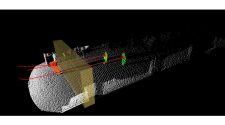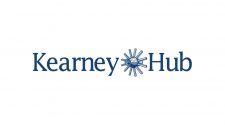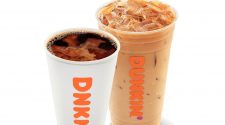Dublin, Feb. 16, 2021 (GLOBE NEWSWIRE) — The “Wearable Technology Market by Device Type, Sector (Consumer, Enterprise, Industrial, and Government), Industry Verticals, Applications, Solutions, and Managed Services 2021 – 2026” report has been added to ResearchAndMarkets.com’s offering.
This report evaluates the current state of the wearable technology ecosystem including devices, applications, and industry segments. The report addresses wearables in consumer and business with consideration towards enterprise, industrial, and government use cases, key challenges, market players, and solutions. The report also provides an outlook for the future of wearable technology with forecasts for the period 2021 to 2026.
Select Report Findings:
-
North America and South America are the largest and fastest-growing markets respectively
-
Wearable technology data as a managed service will reach $319 million USD globally by 2026
-
Leading industries for wearable technology will be healthcare, sports and fitness, and manufacturing
-
While the fastest growing area within the enterprise, hospitality services will remain a small fraction of the market
-
Driven by manufacturing, the industrial sector in Europe is anticipated to represent over $1.27 billion by 2026
Wearable technology presents the potential for massive transformation in many industries. The more obvious ones include consumer electronics and communications. Early adopter industries include clothing, healthcare, sports, and fitness. However, we see many industries adopting wearable technologies as computing and wireless communications integrate wearable into virtually every aspect of products and services.
At the consumer level, increased perception of value and willingness to engage in wearable tech apps and services is building as new forms of communications, content, applications, and commerce become available. As WiFi6 is increasingly deployed in various public venues such as train stations and airports, companies will offer virtual reality as a means of infotainment and advertising, which will drive wearable technology sales and rentals. In addition, new consumer users of immersive technology will drive the adoption and usage of wearable technology due to improved portability and mobility associated with 5G.
We see several factors converging to facilitate wearable technology integration including expanded wireless capacity due to pervasive wireless (WiFi6, LTE, and 5G) and the need for wireless companies to establish new revenue streams, continuously decreasing cost of data, and the significant backing from huge companies including Google, Apple, and others. We also anticipate significant wearable tech developments in key technologies such as augmented reality, virtual reality, and next-generation telepresence.
In terms of wearable technology evolution, we see body area networks becoming a larger factor along with IoT integration involving sensors and haptic interfaces to provide a feedback loop that provides ambient awareness, increased performance, and user satisfaction for many immersive technology applications.
Target Audience:
-
Internet of Things companies
-
Wireless device manufacturers
-
Consumer electronics companies
-
Wearable technology developers
-
Embedded computing companies
-
Wireless service providers of all types
Key Topics Covered:
1.0 Executive Summary
2.0 Introduction
2.1 Wearable Technology Overview
2.2 Wearable Technology Market: Demand vs. Supply Side
2.3 Wearable Technology Market Opportunities
2.4 Wearable Technology Market Constraints
2.4.1 Design Constraints
2.4.2 High Power Consumption
2.4.3 High Investment Cost and High Price
2.4.4 Lack Network Security and Data Privacy
2.4.5 Usage Restrictions
3.0 Wearable Technology and Solution Analysis
3.1 Wearable Technology Devices and Applications
3.1.1 Personal Health and Fitness Management
3.1.1.1 Activity Trackers
3.1.1.2 GPS Monitoring
3.1.1.3 Other Wearable Devices
3.1.2 Personal Health Insurance
3.1.3 Prevention, Diagnosis, and Management of Disease
3.1.4 Healthcare and Medical Devices
3.1.5 Sports Performance Enhancement
3.1.5.1 Sport Brands
3.1.5.2 Textiles and Footwear
3.1.5.3 Devices for Particular Sports
3.1.5.4 Wearable Chemical Sensors
3.1.5.5 Concussion Detection
3.1.5.6 Objective Refereeing
3.2 Wearable Technology in Select Enterprise Verticals
3.2.1 Smart Workplace
3.2.2 Manufacturing
3.2.3 Healthcare and Medical
3.2.4 Other Enterprise Verticals
3.3 Wearables in an Enterprise Cloud Environment
3.4 Wearable Technology Adoption Factors
3.4.1 Enterprise Adoption Challenges
3.4.2 Industry Specific Factors
3.5 Wearable Device and Data Access Factors
3.6 Wearable Technology Growth Considerations
3.6.1 Continued Growth in Fitness and Health
3.6.2 Importance of Aesthetics
3.6.3 Beyond Glasses, Fitness Bands, and Watches
3.6.4 Ambient Internet of Things Impact on Wearables
3.6.5 Wearables, Data, and Analytics
3.6.6 Continued Downward Price Pressure
3.6.7 Expanding to Enterprise and Workplace
3.7 Wearable Technology Key Success Factors
3.8 Evolution of the Wearable Tech Ecosystem
3.9 Wearable Technology and Gaming
3.10 Wearable Technology in Marketing and Advertising
3.11 Advancements in Flexible Sensors and Nanosensors
4.0 Wearable Technology Company Analysis
4.1 Xiaomi Technology Co. Ltd.
4.2 BBK Electronics Industry Co. Ltd
4.3 Alphabet Inc.
4.4 Lifesense Group B.V.
4.5 Johnson & Johnson
4.6 Smiths Group plc
4.7 Roche Holding AG
4.8 Apple Inc.
4.9 Westunitis
4.10 Matrix Industries
4.11 Atlas Wearables Inc.
4.12 Athos
4.13 Ocutrx
4.14 Augmedix
4.15 Koninklijke Philips N.V
4.16 Qualcomm Inc.
4.17 Medtronic PLC
4.18 3L Labs
4.19 4iiii Innovations Inc.
4.20 Adidas America Inc.
4.21 Avegant Corp.
4.22 BSX Insight
4.23 Casio America Inc.
4.24 ConnectDevice Holding Ltd.
4.25 DAQRI
4.26 Seiko Epson Corp.
4.27 FitBit Inc. (Google)
4.28 RealWear
4.29 EarlySense
4.30 Brain Scientific
4.31 Neurotech
4.32 WizardWatch
4.33 Magic Leap
4.34 Vivalnk
4.35 HTC
4.36 Microsoft
4.37 Proteus
4.38 Stanford Biology
4.39 ActiveLinxx LLC
4.40 Foxtel
4.41 Free Wavz
4.42 Fujitsu
4.43 Garmin Ltd.
4.44 Glofaster
4.45 GOQii
4.46 Hovding
4.47 Huawei Technologies Co. Ltd.
4.48 iHealth Labs Inc.
4.49 StarVR Corp
4.50 Instabeat
4.51 Intel Corporation
4.52 Jaybird
4.53 Jumpy
4.54 Leapfrog Enterprises Inc.
4.55 LG Electronics
4.56 LifeBEAM Inc.
4.57 Meta Company
4.58 PAI Health
4.59 Misfit
4.60 Monster Inc.
4.61 Motorola
4.62 Nike Inc.
4.63 NTT Docomo Inc.
4.64 Oculus VR LLC
4.65 o-synce
4.66 Actofit Wearables
4.67 Pebble
4.68 Polar Electro
4.69 Qardio Inc.
4.70 Recon Instruments
4.71 Reebok International Limited
4.72 Samsung Electronics Co. Ltd.
4.73 ShotTracker
4.74 Sony Corporation
4.75 Soundbrenner Limited
4.76 Sqord Inc.
4.77 Suunto
4.78 North
4.79 Timex.com Inc.
4.80 Tlink
4.81 Tobii AB
4.82 Vuzix
4.83 Weartrons Labs
4.84 Xensr
4.85 Zepp US Inc.
4.86 ZTE Corporation
5.0 Global Wearable Market Analysis and Forecasts 2021 – 2026
5.1 Wearables Market by Unit Sales vs. Revenue 2021 – 2026
5.2 Wearables by Device Type 2021 – 2026
5.3 Wearable Applications 2021 – 2026
5.4 Wearables by Consumer, Enterprise, Industrial, and Government Sector 2021 – 2026
5.5 Wearables by Industry 2021 – 2026
5.6 Wearables by Components 2021 – 2026
5.7 Managed Services for Wearables Devices 2021 – 2026
5.8 Wearables Market by Region 2021 – 2026
5.9 North America Wearables by Device Type 2021 – 2026
5.10 North America Wearable Applications 2021 – 2026
5.11 North America Wearables by Consumer, Enterprise, Industrial, and Government Sector 2021 – 2026
5.12 North America Wearables by Industry 2021 – 2026
5.13 North America Wearables Market by Country 2021 – 2026
5.14 South America Wearables by Device Type 2021 – 2026
5.15 South America Wearable Applications 2021 – 2026
5.16 South America Wearables by Consumer, Enterprise, Industrial, and Government Sector 2021 – 2026
5.17 South America Wearables by Industry 2021 – 2026
5.18 South America Wearables Market by Country 2021 – 2026
5.19 Europe Wearables by Device Type 2021 – 2026
5.20 Europe Wearable Applications 2021 – 2026
5.21 Europe Wearables by Consumer, Enterprise, Industrial, and Government Sector 2021 – 2026
5.22 Europe Wearables by Industry 2021 – 2026
5.23 Europe Wearables Market by Country 2021 – 2026
5.24 Asia Pacific Wearables by Device Type 2021 – 2026
5.25 Asia Pacific Wearables Applications 2021 – 2026
5.26 Asia Pacific Wearables by Consumer, Enterprise, Industrial, and Government Sector 2021 – 2026
5.27 Asia Pacific Wearables by Industry 2021 – 2026
5.28 Asia Pacific Wearables Market by Country 2021 – 2026
5.29 Middle East and Africa Wearables by Device Type 2021 – 2026
5.30 Middle East and Africa Wearable Applications 2021 – 2026
5.31 Middle East and Africa Wearables by Consumer, Enterprise, Industrial, and Government Sector 2021 – 2026
5.32 Middle East and Africa Wearables by Industry 2021 – 2026
5.33 Middle East and Africa Wearables Market by Country 2021 – 2026
6.0 Conclusions and Recommendations
For more information about this report visit https://www.researchandmarkets.com/r/q51y87
CONTACT: CONTACT: ResearchAndMarkets.com Laura Wood, Senior Press Manager [email protected] For E.S.T Office Hours Call 1-917-300-0470 For U.S./CAN Toll Free Call 1-800-526-8630 For GMT Office Hours Call +353-1-416-8900

















